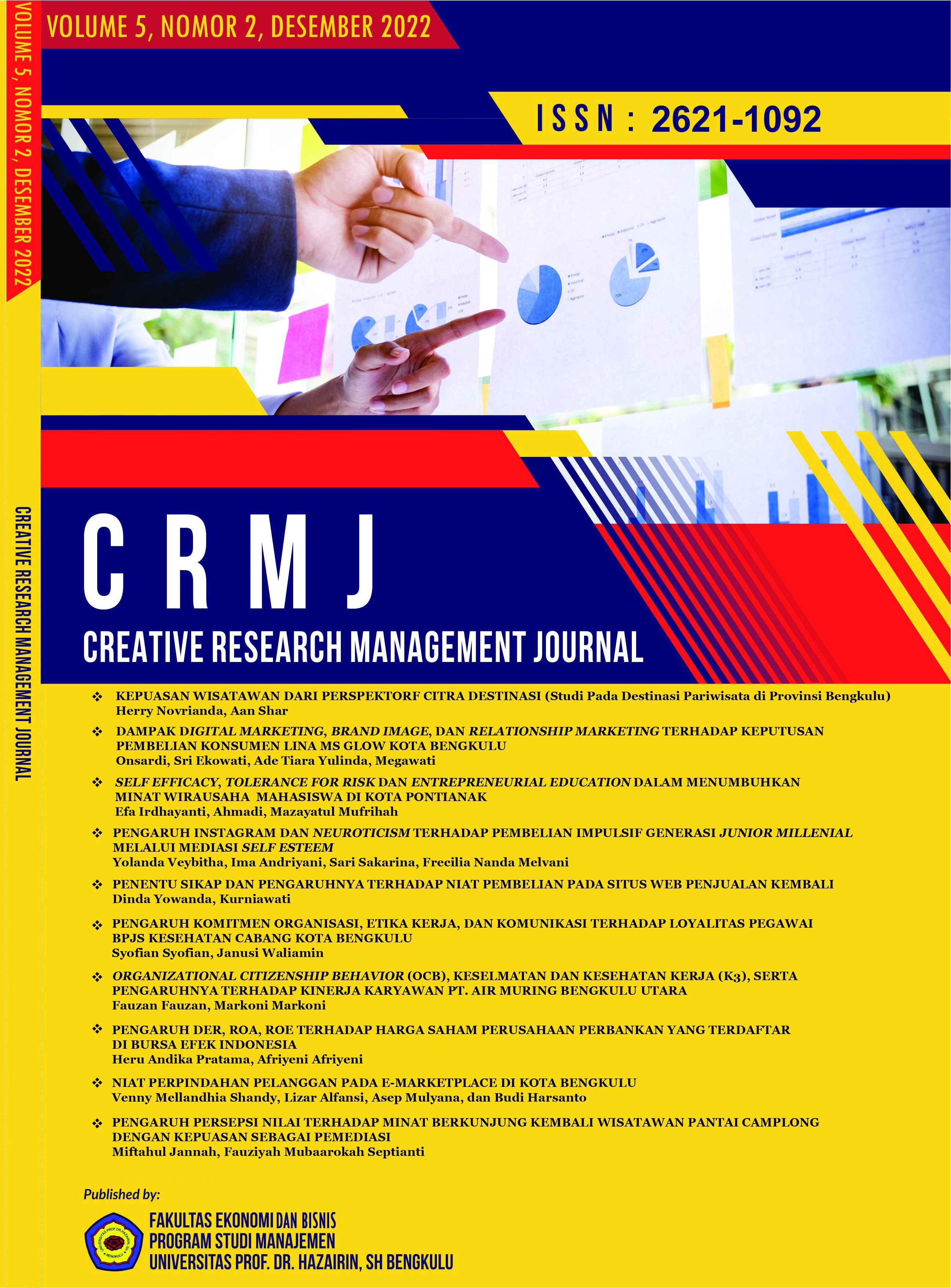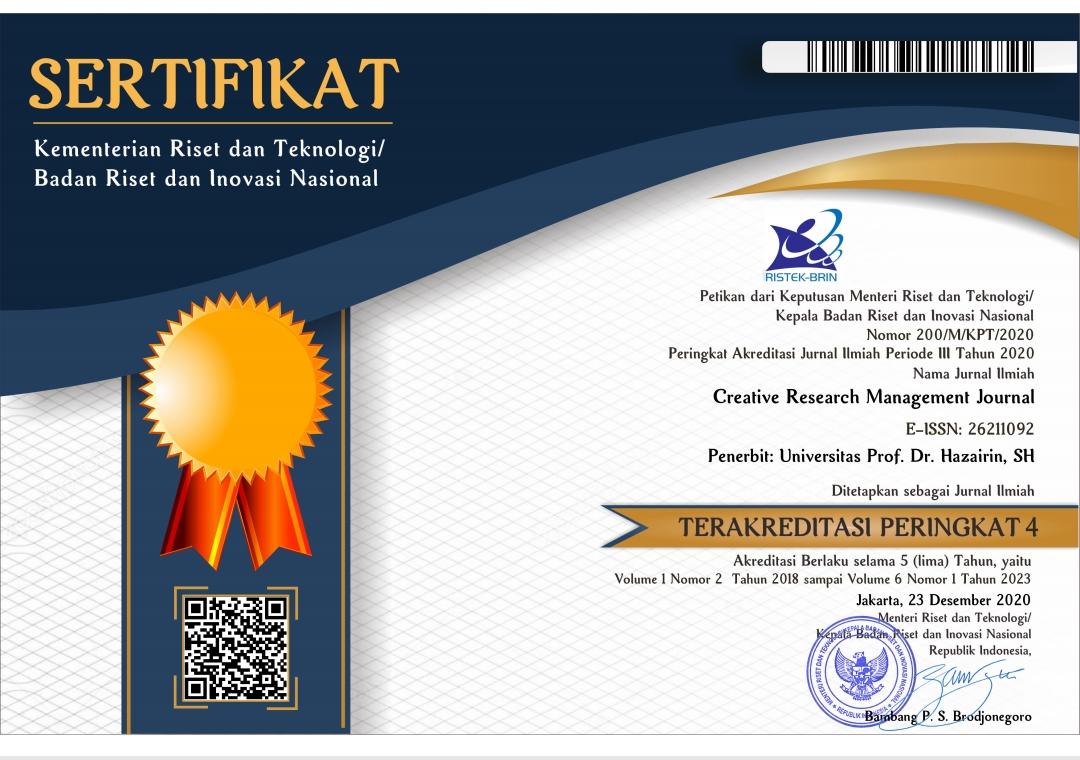KEPUASAN WISATAWAN DARI PERSPEKTIF CITRA DESTINASI (Studi pada Destinasi Pariwisata di Provinsi Bengkulu)
DOI:
https://doi.org/10.32663/crmj.v5i2.3101Keywords:
Cognitive Image, Affective Image, Tourist SatisfactionAbstract
The purpose of the study was to find out how the image of the destination and tourist satisfaction and how the influence of the image on tourist satisfaction in tourism destinations in Bengkulu Province. This research is a conclusive research study of 150 tourists to natural tourist destinations that are included in the Bengkulu Province Tourism Strategic Area Plan (TSAP). Tourist perception was developed to test the hypothesis of the relationship model or the effect of the impact of the destination image on tourist satisfaction. The data analysis methods used are descriptive analysis and multiple linear regression analysis. The findings of this study indicate that tourism destinations have an excellent image; this can be seen from the destination image components, including cognitive and affective images, which are in the excellent category. When viewed from tourist satisfaction towards natural tourist destinations, tourists have been satisfied with tourism destinations. Cognitive and affective images also positively affect tourist satisfaction with tourism destinations. The better the cognitive and affective image, the more tourist satisfaction at natural tourism destinations will increase.














